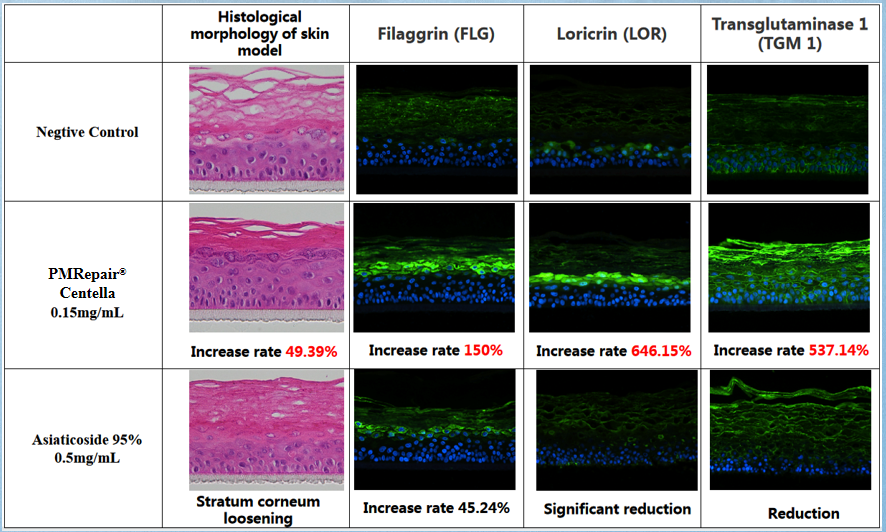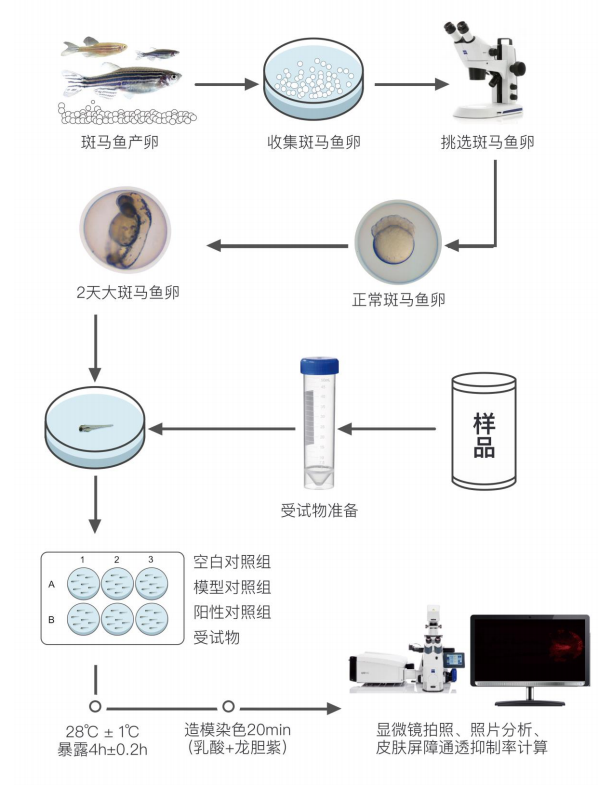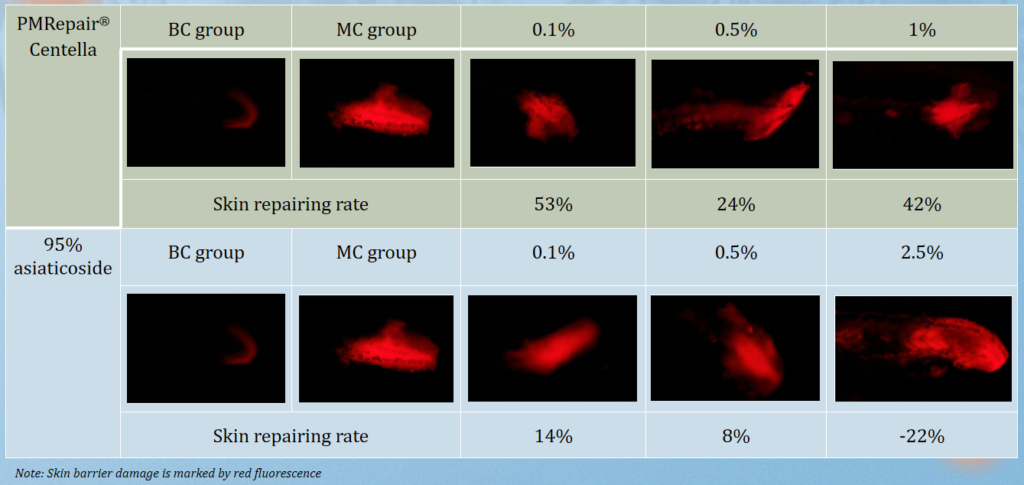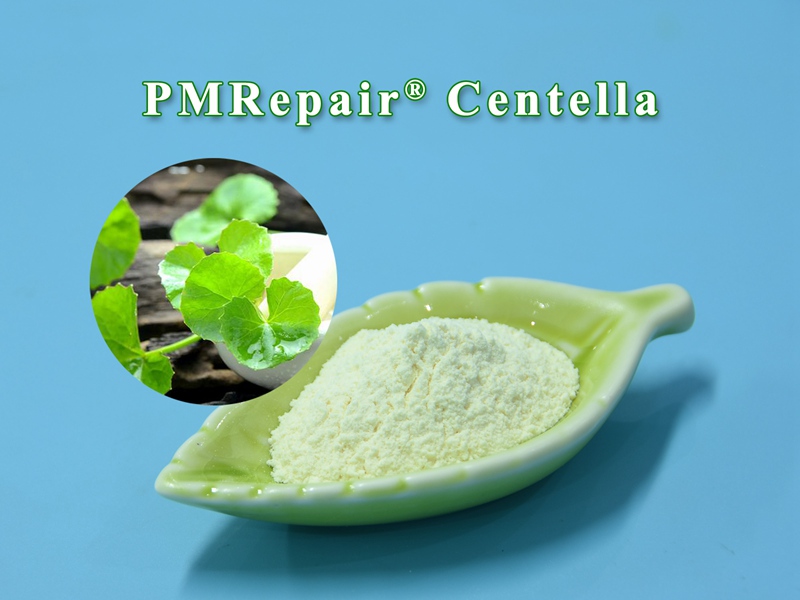PMRepair® Centella is a natural cosmetic material that can be soluble in water or butanediol with excellent skin repair and anti-inflammatory effects. Its main active components are Madecassoside, Asiaticoside B and a little Asiaticoside. Today, we will share with you some test data of PMRepair® Centella for skin repair, comparing with Asiaticoside (95%).
- PMRepair® Centella for Skin Repair on 3D Skin
Months ago, we have already share with you an article about PMRepair® Centella’s skin barrier repair effect. That is, according to the in vitro 3D epidermal skin model repairing effect test, we found that 95% asiaticoside has almost no repairing effect on this experimental model, even slightly damaged the skin tissue. However, at a concentration of 0.15% PMRepair® Centella achieves a strong repairing effect by improving tissue morphology by 49.39%, promoting skin tissue restoration and increasing the content of barrier-related proteins FLG, LOR, TGM1 separately by 150%, 646.15%, 537.14%, as shown in the below figure.

Based on one data tested in one experimental model, it can only be concluded that asiaticoside may not have skin repair effect. In order to further verify the repair effect of asiaticoside, Plamed once again conducted a skin repair test of Asiaticoside based on zebrafish, and the results reached the same conclusion: Asiaticoside has no repair effect.
More product information, please visit PMRepair® Centella Introduction.
- Test Principle of PMRepair® Centella for Skin Repair
Damage to the skin barrier leads to increased skin permeability, which increases the skin’s sensitivity to external stimuli and is an important cause of skin erythema, dryness, peeling and itching. Therefore, repairing the skin barrier and reducing the external irritation is one of the important ways to maintain the normal state of the skin. By using non-specific fluorescent staining reagents, the changes of skin barrier permeability in zebrafish can be efficiently reflected, as shown in the positive correlation between the fluorescence area of zebrafish embryonic skin and the skin barrier permeability. Therefore, this test uses fluorescent dyeing reagents to mark skin permeability. Evaluate the activity of the test sample in inhibiting skin permeability by testing the red fluorescence area of zebrafish skin, thereby reflecting the skin barrier repair efficacy of the test sample.

- Test Method of PMRepair® Centella for Skin Repair
24 zebrafish embryos in 48-h large were exposed to the formula solution with 1%, 0.5% and 0.5% PMRepair® Centella respectively. And the blank control group and model control group were set as well. Zebrafish embryos were exposed for 4 hours and stained for 20 minutes (1.1g/L lactic acid +0.02g/L Gentian violet). The fluorescence area of caudal fin was measured by fluorescence photography and analyzed statistically.
- Test Results of PMRepair® Centella for Skin Repair
It can be seen from the test data that asiaticoside has no repairing effect or has a weak repairing effect at either low or high doses. However, PMRepair® Centella has a significant skin barrier repair effect at a lower dose of 0.1%, the repairing rate is 53%.

From above 2 test data, we can conclude PMRepair® Centella for skin repair is more effective than asiaticoside. Plamed PMRepair® Centella is consist of Madecassoside, Asiaticoside B and a little Asiaticoside. Among them, Madecassoside is one of the main terpenoids found in Centella asiatica extracts and is a natural, phytoactive ingredient with anti-inflammatory characteristics. Madecassoside is soluble in butanediol and other glycol and is a popular ingredient in all types of cosmetics.

PMRepair® Centella is cost-effective, the test concentration and price are one-third of 95% asiaticoside, but the skin repairing effect is far more than asiaticoside. We can support you best price and technical data for market promotion, welcome ask a request for samples and more details.







